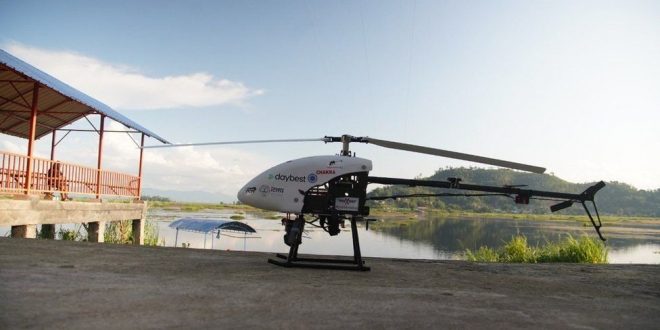08-10-2021
NEW DELHI: India has begun delivering Covid-19 vaccines by commercial drones to speed up the vaccination drive, a senior government scientist told the BBC.
Dr Samiran Panda said drones are being used to deliver doses in mountainous states in the country’s north-east.
India aims to vaccinate all eligible citizens by the end of 2021 but experts say the drive needs to pick up a consistent pace to meet the target.
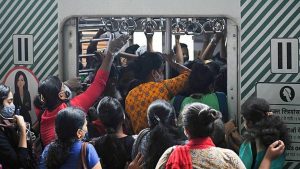 India has so far given more than 925 million doses of three approved jabs.
India has so far given more than 925 million doses of three approved jabs.
About 70% of the country’s eligible populations have received at least one dose of a Covid vaccine, according to official data.
India has reported more than 33 million COVID cases, second only to the US, and more than 440,000 deaths – behind the US and Brazil.
On Monday, India tested its first drone delivery of vaccines in the north-eastern state of Manipur.
A drone carrying ten doses flew from Bishnupur to a primary health clinic in the Karang Island in Loktak – a 240-sq-km lake riddled with islands – in 12 minutes. The journey to Karang, where 3,500 people live, usually takes some four hours by boat and road.
Dr Panda, chief scientist and head of epidemiology at the Indian Council of Medical Research (ICMR), said the trial run was successful and 10 people on the island took the jabs.
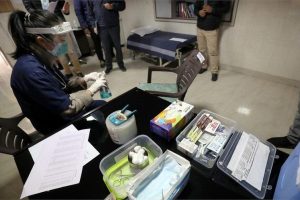 The states of Manipur and Nagaland are now likely to ferry doses to far-flung villages, a journey which often takes up to 12 hours by mountain roads and across streams, he added.
The states of Manipur and Nagaland are now likely to ferry doses to far-flung villages, a journey which often takes up to 12 hours by mountain roads and across streams, he added.
Drones will also be used to ferry doses to the eastern archipelago of Andamans and Nicobar where “transportation by boat” was taking a long time.
“We are trying to make sure there are no outbreaks in these sparsely populated remote areas by vaccinating residents fast. If people get infected and contract severe disease they don’t have access to ventilators or intensive care or oxygen in these areas,” Dr Panda said.
The government is using drones which can carry a payload of 4.5kg or a maximum of 900 doses and fly at least 70km (43 miles) to ferry doses.
How is India’s rollout going?
Since 16 January, India has administered more than 925 million doses.
More than 670 million people have received the first dose and another 255 million or so have received both doses so far.
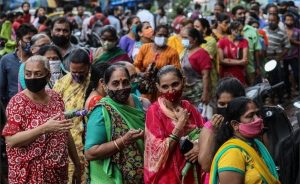 On 17 September, India administered more than 20 million doses in a day in a record-breaking effort to mark Prime Minister Narendra Modi’s 71st birthday.
On 17 September, India administered more than 20 million doses in a day in a record-breaking effort to mark Prime Minister Narendra Modi’s 71st birthday.
Experts say record-breaking days are encouraging but vaccination rates need to rise consistently. They estimate that India needs to give more than 10 million doses a day to fully vaccinate all eligible adults by the end of 2021.
Much will depend on levels of vaccine hesitancy and the availability of doses in the coming months.
India’s daily case count has been dropping, it has been reporting less than 40,000 new daily cases in the past month but doctors fear that a third wave is likely given that the country has fully reopened even as the threat of new variants looms large.
While the vaccination drive has gained momentum, experts worry about a gender gap government data shows 6% fewer women are getting vaccinated. This is especially true in rural India where women have limited access to the internet and are hesitant or scared to take the vaccine.
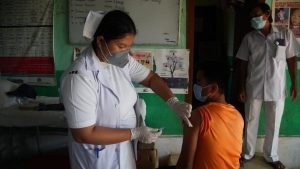 Although a higher number of doses are being administered daily in rural areas, the share of population being vaccinated in urban areas is still greater.
Although a higher number of doses are being administered daily in rural areas, the share of population being vaccinated in urban areas is still greater.
Most countries, especially those in the developing world, have struggled to access vaccines, a challenge that India, as the world’s largest vaccine maker, didn’t expect to face but Modi’s government didn’t place orders from vaccine makers early enough – and a devastating second wave in April pushed them to expand the drive too quickly to the entire adult population, which is nearly a billion.
In June, the government told the Supreme Court that 1.35 billion doses will become available between August and December. It would take about 1.8 billion doses to vaccinate all eligible adults in India.
Which vaccines is India using?
India is using three vaccines – the Oxford-AstraZeneca jab, known locally as Covishield; Covaxin by Indian firm Bharat Biotech; and Russian-made Sputnik V.
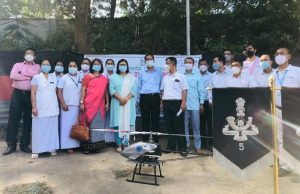 India has also approved its first vaccine for those under 18.
India has also approved its first vaccine for those under 18.
The three-dose ZyCoV-D vaccine prevented symptomatic disease in 66% of those vaccinated, according to an interim study quoted by the vaccine maker Cadila Healthcare. The ZyCoV-D vaccine is also the world’s first DNA vaccine against Covid-19.
The government has also authorized Indian pharma company Cipla to import Moderna’s vaccine, which has shown nearly 95% efficacies against COVID-19 but it’s not clear yet how many doses will be made available to India.
Several more vaccines are in various stages of approval.
Vaccination is voluntary. More than 70,000 centres, mostly state-run, are offering jabs, but people can also pay for a dose at private facilities.
The government is spending around $5bn to provide free doses at state-run clinics, public health centres and hospitals
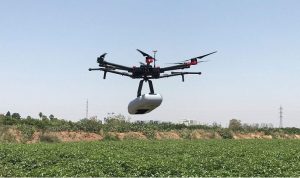 Have there been ‘adverse events’ after vaccination?
Have there been ‘adverse events’ after vaccination?
People can experience side effects from vaccines.
India has a 34-year-old surveillance program for monitoring “adverse events” following immunization. Experts say a failure to transparently report such incidents could lead to fear-mongering around vaccines.
India has reported more than 23,000 “adverse events” after vaccination as of 17 May. Most of them were classified as “minor” – anxiety, vertigo, giddiness, dizziness, fever and pain.
It also examined 700 cases of “severe adverse events” and reported 488 deaths until mid-Jun but the government said the this did not mean they were due to vaccination, adding that “the risk of dying following vaccination is negligible compared to the known risk of dying due to COVID-19 disease”. (BBC)
 Pressmediaofindia
Pressmediaofindia
